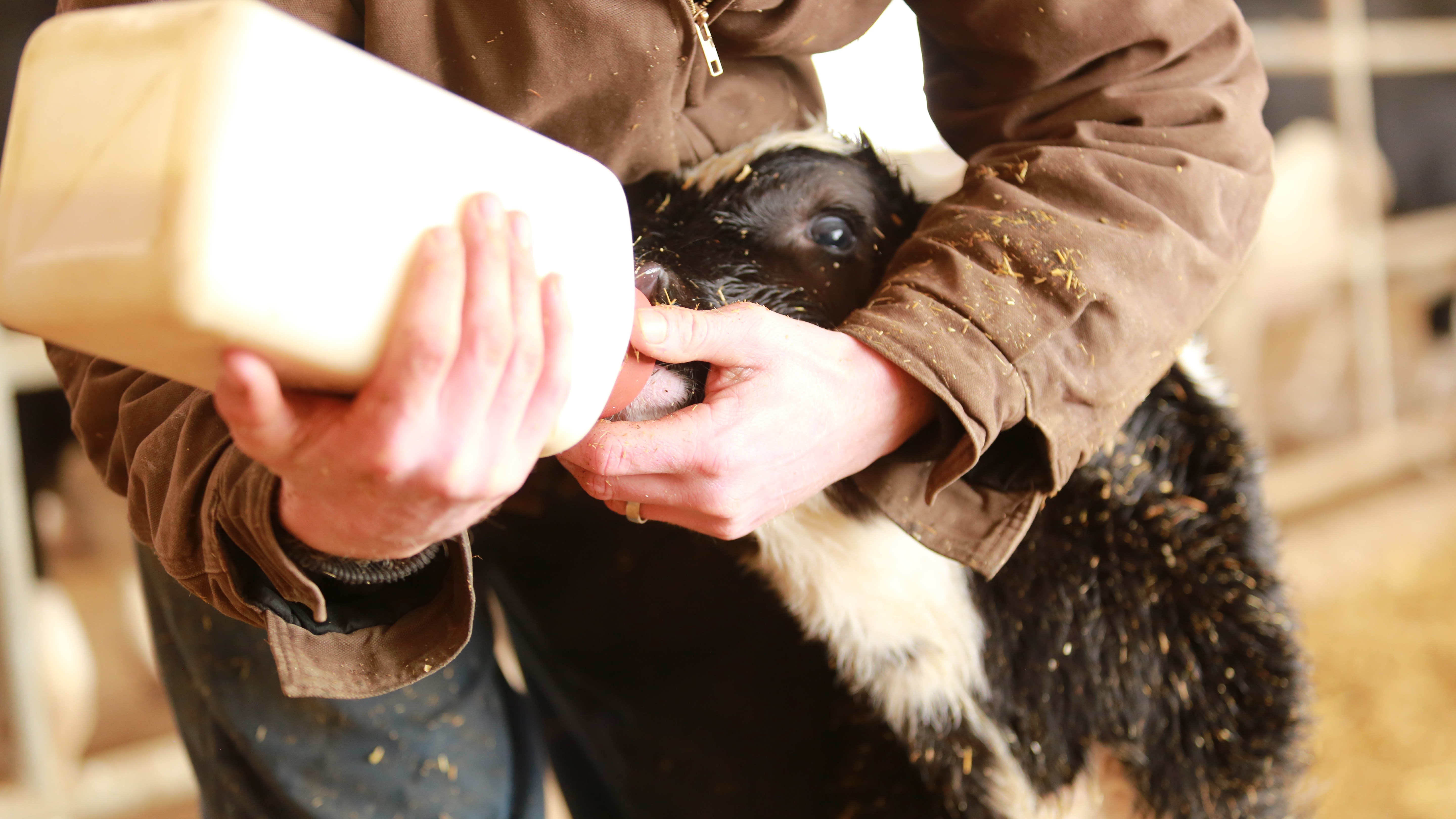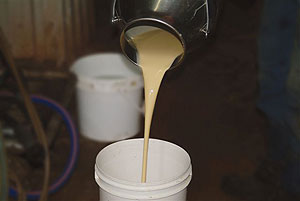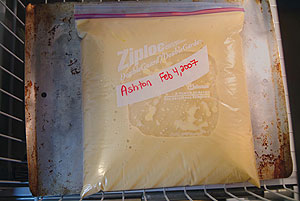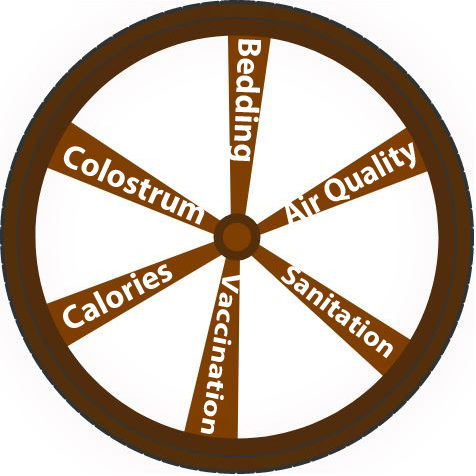Healthy Calf Conference
Follow to stay up-to-date on all Healthy Calf Conference updates. Speaker announcements, sponsorship information, registration announcements, and more.

“Colostrum is the most important thing we can do to make a positive impact on the health of calves,” began Dr. Ryan Leiterman at W-S Feed & Supplies Limited Dairy Producer Meeting in Elmira. Dr. Leiterman is the Director of Technical Services for Crystal Creek, a livestock nutrition and animal health company in Wisconsin.
By now, most producers understand that colostrum transfers Immunoglobulins (antibodies that fight off infection) to the calf. Essentially, the dam’s experience fighting bacteria is passed on to the calf, known as passive immunity. The dam’s immune cells then protect the calf while it develops its own active immunity. The dam’s immune cells train the calf’s, giving the calf a “recipe book” of how to fight off different infections. The dam’s immune cells start to disappear once the calf is about two days of age, but that doesn’t make this process any less vital. The calf begins ahead of the curve if immunity from the dam teaches their immune system, while a calf with a failure of passive transfer is playing “catch-up” from day one. A calf with a failure of passive transfer is unable to fight off even low levels of bacteria or viruses.
Immunoglobulins may not be the only cells in colostrum that set the calf up for success. New research is beginning to show the importance of white blood cells (WBCs). Unfortunately, it has also been found that common colostrum management such as freezing or creating powder can kill WBCs.


Now that we know these WBCs may play an important role, we need to start evaluating how we manage colostrum. Dr. Leiterman stated, “Mother nature tends to get it right.” Before telling producers the best type of colostrum to feed is fresh, followed by frozen, then powdered.
It is important to note that the benefits of any form of colostrum outweigh the calf getting no colostrum or low-quality colostrum. If your calf cannot have fresh, high quality, clean colostrum, don’t be afraid to use frozen or powdered, but try not to use frozen or powdered as your first option unless you and your herd veterinarian have established a specific reason (such as disease control) to do this.
Is your fridge or freezer good enough to store colostrum? Think about the value of colostrum in preventing disease and milk production, or even the cost of powdered colostrum – the price of a reliable fridge becomes well worth it to protect this valuable resource.
Store colostrum in smaller containers to allow it to cool as quickly as possible – if the outer layer cools but inside is still warm – the warm area is still growing bacteria. Get colostrum into the fridge or freezer to start the cooling process as soon as possible. Smaller containers and flat containers (like high-quality single-use plastic bags) help colostrum cool as quickly as possible and will also speed up warming when it is time to feed the colostrum.
Feed 200 grams of IgG (immunoglobulin G) or four quarts of colostrum (approximately 4 litres), whichever is more. Don’t feed less colostrum because it has a lot of IgG – the calf also needs the calories in the colostrum. Feeding just a set amount of colostrum that doesn’t have enough IgG will hurt calves in the long run by increasing the risk of failure of passive transfer. It is important to know the quality of colostrum to ensure calves get at least 200 grams of IgG. See here for assessing colostrum quality.
Producers are often worried that feeding calves four litres or more at a time can cause problems. Dr. Leiterman told producers, yes, you can feed calves more than that – they “won’t explode,” he says. Ensuring calves get more colostrum if the colostrum is of lower quality is absolutely essential. Calves that had a difficult birth may have a lessened ability to absorb IgG, so may need even more than the standard 200 grams or four quarts. It is okay to “overfeed” the first meal because the first milking colostrum is still higher in calories and IgG concentration than transition milk, milk, or milk replacer. If the calf doesn’t nurse its whole first feeding, tube the rest. However, always try to allow the calf to nurse its meals when possible. Don’t worry if you feed so much that they aren’t interested in their second meal – that means you got plenty of the good stuff in!
Calves will nurse about 1-1.5 quarts (0.95 – 1.40 litres) from their dam if you miss the birth and they end up staying with the dam for a few hours. Dr. Leiterman suggests you assume calves drank one quart on their own and feed the other three. Remember, they won’t explode!
You cannot tell colostrum quality just by looking at it. Prove this to yourself or your staff by using a Brix refractometer, a simple relatively inexpensive tool ($100-200) that allows producers to assess colostrum quality instantly and without leaving the maternity pen. Try and guess the quality before testing it. This will show you that it isn’t possible to judge just by a look. A digital refractometer is more expensive ($450-550), but is easier to use, more accurate, and ensures all users see the same measurement.
| Brix Refractometer reading | IgG concentration per litre (g/L) | Amount of colostrum to feed (L) | Total IgG fed (g) | |
| 18% | 40 | – | – | This quality is too poor for a first feeding, but could be used for second or third feedings. |
| 22% | 50 | 4 | 200 | This is the minimum quality and amount to feed for a first feeding. |
| 28% | 95 | 4 | 380 | This is very high-quality colostrum, however, don’t feed less quantity – the calf still needs the calories. |
A minimum reading should be 22 percent, but the higher the better. Many farms set their own benchmark above this level, to ensure calves only get colostrum with very high concentrations of IgG. You can’t have too much!
Most people assume heifer colostrum quality is worse, as the heifer hasn’t had as much experience with bacteria as a cow has. However, cows also tend to produce greater volumes of milk. This can dilute the colostrum, meaning the concentration of IgG is lower. Don’t just assume heifer colostrum is low quality and cow colostrum is best – test it!
Dr. Leiterman says don’t bother with a colostrometer – these temperature sensitive, subjective, and easily breakable glass instruments are nowhere near as accurate as a digital refractometer. If you are going to invest in testing equipment, purchase the more accurate and durable digital refractometer. Once you break a few colostrometers ($75-100 each), you would have been farther ahead with a refractometer! Click here to see Calf Care’s suggested colostrum testing protocol.
The first four hours of life – the colostrum feeding period – will impact milk production at four years old. No amount of care can make up for improper colostrum management. “If you are struggling to keep your herd size, colostrum can help,” Dr. Leiterman said, showing figures that of calves fed only two litres of colostrum, only 75% made it past the second lactation, with a total milk production of first and second lactation of 35 297 litres. Meanwhile, 87% of calves fed four litres of colostrum survived past their second lactation, producing 37 558 litres. Good colostrum is worth an additional approximately $250 per lactation – not bad for something you only have to do once. Use this extra profit to invest in a refractometer!

Dr. Leiterman drew a simple wheel with five spokes. He explained that five calf care principles; colostrum, bedding, calories, air quality, sanitation, and vaccination work together to keep calves healthy, much as spokes keep a wheel round. You can remove one spoke, and the wheel will stay in pretty good shape. Once you remove more than one, the wheel begins to lose shape. When pressures are placed on a calf, such as stresses of hunger, cold, heat, or bacteria, like a wheel with no spokes, the calf begins to fall apart. Following excellent protocols for five of the six principles will ensure most calves are fine, but cut too many and you’ll run into problems He emphasized, “It doesn’t all have to be perfect, but do most things well.”
Follow to stay up-to-date on all Healthy Calf Conference updates. Speaker announcements, sponsorship information, registration announcements, and more.
The Codes of Practice are nationally developed guidelines for the care and handling of farm animals. They serve as our national understanding of animal care requirements and recommended practices.